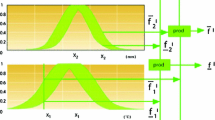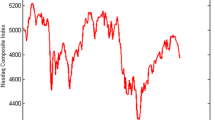Abstract
In this paper, a novel type-2 fuzzy expert system for prediction the amount of reagents in desulfurization process of a steel industry in Canada is developed. In this model, the new interval type-2 fuzzy c-regression clustering algorithm for structure identification phase of Takagi–Sugeno (T–S) systems is presented. Gaussian Mixture Model is used to generate partition matrix in clustering algorithm. Then, an interval type-2 hybrid fuzzy system, which is the combination of Mamdani and Sugeno method, is proposed. The new hybrid inference system uses fuzzy disjunctive normal forms and fuzzy conjunctive normal forms for aggregation of antecedents. A statistical test, which uses least square method, is implemented in order to select variables. In order to validate our method, we develop three system modeling techniques and compare the results with our proposed interval type-2 fuzzy hybrid expert system. These techniques are multiple regression, type-1 fuzzy expert system, and interval type-2 fuzzy TSK expert system. For tuning parameters of the system, adaptive-network-based fuzzy inference system is used. Finally, neural network is utilized in order to reduce error of the system. The results show that our proposed method has less error and high accuracy.
Similar content being viewed by others
References
Bezdek J (1973) Fuzzy Mathematics in Pattern Classification. PhD thesis Applied Math, Center, Cornell University, Ithaca, USA
Celikyilmaz A, Türksen IB (2009) Modeling uncertainty with fuzzy logic: with recent theory and applications. Springer, Berlin
Choi BI, Rhee FC (2009) Interval type-2 fuzzy membership function generation methods for pattern recognition. Inf Sci 179(13):2102–2122
Dickens E (2003) Type-2 fuzzy logic. Retie Neurali 2 Dipartimento di Informatics, Universita’ di Pisa., Pisa. Available from: eridi563@ student.liu.se
Fazel Zarandi MH, Turksen IB, Torabi Kasbi O (2007) Type-2 fuzzy modeling for desulphurization of steel process. Expert Syst Appl 32(1):157–171
Fazel Zarandi MH, Gamasaee R & Turksen IB (2011) Type-2 fuzzy c-regression clustering algorithm for Takagi–Sugeno system identification in steel industry, Working paper, Amirkabir University of Technology (Tehran Polytechnic), Department of Industrial Engineering
Gath I, Geva AB (1989) Unsupervised optimal fuzzy clustering. IEEE Trans Pattern Anal Mach Intell 11(7):773–781
Gorzalczany MB (1987) A method of inference in approximate reasoning based on interval valued fuzzy sets. Fuzzy Sets Syst 21:1–17
Gustafson EE & Kessel WC (1979) Fuzzy clustering with a fuzzy covariance matrix, Proc. of the IEEE Conference on Decision and Control, San Diego, California, pp. 761–766
Hathaway RJ, Bezdek JC (1993) Switching regression models and fuzzy clustering. IEEE Trans Fuzzy Syst 1(3):195–204
Hwang C, Rhee F (2007) Uncertain fuzzy clustering: interval type-2 fuzzy approach to C-means. IEEE Trans Fuzzy Syst 15(1):107–120
Kilic K, Uncu O, Turksen IB (2007) Comparison of different strategies of utilizing fuzzy clustering in structure identification. Inf Sci 177:5153–5162
Kim E, Park M, Ji S, Park M (1997) A new approach to fuzzy modeling. IEEE Trans Fuzzy Syst 5(3):328–337
Li C, Zhou J, Xiang X, Li Q, An X (2009) T–S fuzzy model identification based on a novel fuzzy c-regression model clustering algorithm. Eng Appl Artif Intell 22:646–653
Liang Q, Mendel JM (2000) Interval type 2 fuzzy logic systems: theory and design. IEEE Trans Fuzzy Syst 8(5):535–550
Ljung L (2010) Perspectives on system identification. Annu Rev Control 34:1–12
McLachlan GJ, Basford KE (1988) Mixture models: inference and applications to clustering. Marcel Dekker, New York
Mendel JM & John RI (2002) Type-2 fuzzy sets made simple. IEEE Transaction on Fuzzy System, 10(2)
Rhee F & Hwang C (2001). A type-2 fuzzy C-means clustering algorithm, in: Proceedings of the 2001 Joint Conference IFSA/NAFIPS, pp. 1919–1926
Rhee F & Hwang C (2002) An interval type-2 fuzzy perceptron, in: Proceedings of the 2002 I.E. International Conference on Fuzzy Systems, pp. 1331–1335
Rhee F & Hwang C (2003) An interval type-2 fuzzy K-nearest neighbor, in: Proceedings of the 2003 I.E. International Conference on Fuzzy Systems, pp. 802–807
Turksen IB (1986) Interval valued fuzzy sets based on normal forms. Fuzzy Sets Syst 20(2):191–210
Türksen IB (1995) Type I and interval-valued Type II fuzzy sets and logics. In: Wang PP (ed) Advances in fuzzy theory and technology, vol 3. Bookright, Raleigh, pp 31–82
Türksen IB (1996) Fuzzy truth tables and normal forms, Proc. BOFL'96, 15–18, TIT, Nagatsuta, Yokohama, Japan, 7–12
Türksen IB (1999) Type I and Type II fuzzy system modeling. Fuzzy Sets Syst 106:11–34
Zadeh LA (1975) The concept of a linguistic variable and its application to approximate reasoning—I. Inf Sci 8:199–249
Author information
Authors and Affiliations
Corresponding author
Appendices
Appendix A
Appendix B
Rights and permissions
About this article
Cite this article
Fazel Zarandi, M.H., Gamasaee, R. & Turksen, I.B. A type-2 fuzzy expert system based on a hybrid inference method for steel industry. Int J Adv Manuf Technol 71, 857–885 (2014). https://doi.org/10.1007/s00170-013-5372-4
Received:
Accepted:
Published:
Issue Date:
DOI: https://doi.org/10.1007/s00170-013-5372-4








